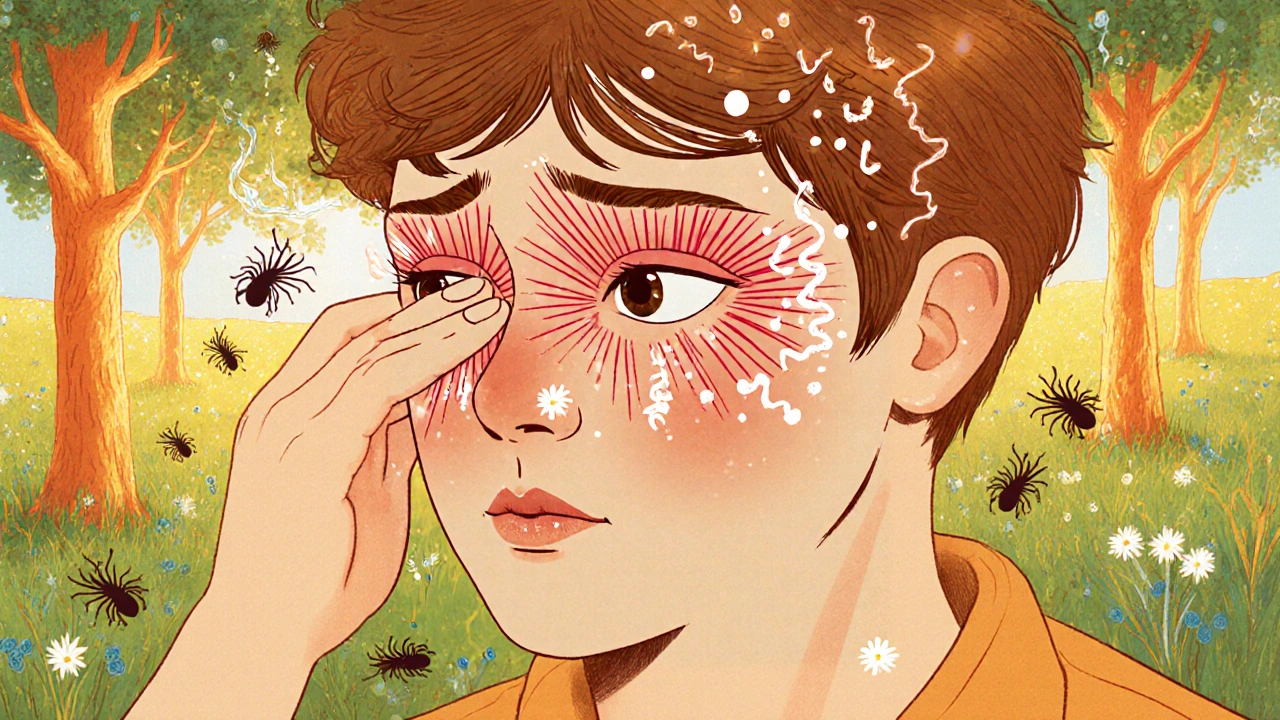Eye Allergy Symptoms: What to Watch For and How to Get Relief
If you're battling eye allergy symptoms, you know how annoying they can be. When dealing with eye allergy symptoms, the uncomfortable signs that appear when allergens irritate the eyes. Also known as ocular allergy manifestations, they often include itching, redness, tearing, and swelling. Below we break down the most common triggers, how your body reacts, and practical steps you can take.
One of the first clues is an itchy sensation that feels like tiny grains of sand on the surface. That itch usually comes with red, watery eyes that may look bloodshot. The eyes may also feel gritty and produce excess mucus. In short, ocular itching, a hallmark of eye allergy symptoms signals that allergens have landed on the delicate conjunctival tissue.
Seasonal pollen is a top offender. When pollen grains drift through the air in spring or fall, they settle on the eye’s surface, sparking an immune response. Seasonal pollen, tiny plant particles that trigger allergic reactions can cause symptoms to flare up within minutes of exposure. Knowing the pollen count in your area helps you anticipate and plan ahead.
Pet dander, dust mites, and mold spores are other common culprits. These microscopic particles stick to clothing, furniture, and even your eyelids, making it hard to avoid contact. When these allergens settle on the eye, they release histamine, which leads to swelling and the classic watery discharge.
To calm the reaction, many turn to antihistamine eye drops, topical medications that block histamine receptors in the eye. They work fast, reducing redness and itch within minutes. Over‑the‑counter options contain compounds like ketotifen or olopatadine and are safe for most adults and children.
Sometimes oral antihistamines are needed, especially when symptoms affect the nose and throat as well. Medications such as cetirizine or loratadine lower the overall histamine load, complementing the relief you get from eye drops. Using both together can provide 24‑hour comfort during high‑pollen days.
Artificial tears are another useful tool. These lubricating drops dilute irritants, flush out allergens, and soothe dry eyes that often accompany allergic reactions. Choose preservative‑free formulas if you need to use them multiple times a day.
Environmental control plays a huge role. Keeping windows closed during peak pollen hours, using HEPA filters, and washing pillowcases weekly cut down on airborne triggers. When you’re outdoors, sunglasses act as a physical barrier, shielding your eyes from direct contact with pollen and dust.
Not all red, itchy eyes are allergies. Conjunctivitis, inflammation of the eye's conjunctiva that can be viral, bacterial, or allergic shares many symptoms but may require different treatment. If you notice thick discharge, pain, or vision changes, it’s time to see a healthcare professional.
Cold compresses, avoiding rubbing your eyes, and staying hydrated can further ease discomfort. By understanding what triggers your eyes and applying the right mix of drops, oral meds, and preventive habits, you’ll keep symptoms in check and enjoy clearer, calmer vision.
Below you’ll find a curated list of articles that dive deeper into each of these topics, from step‑by‑step guide on choosing the best antihistamine eye drops to strategies for managing seasonal flare‑ups.

Allergic Conjunctivitis Explained: Causes, Symptoms & Treatment Options
Learn what triggers allergic conjunctivitis, how to recognize its symptoms, and the most effective treatments-from eye drops to home remedies-for lasting relief.